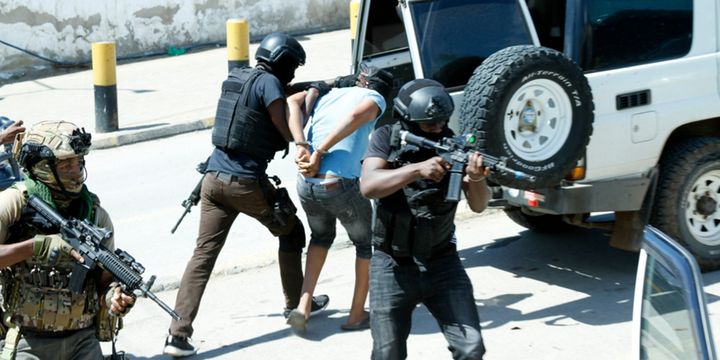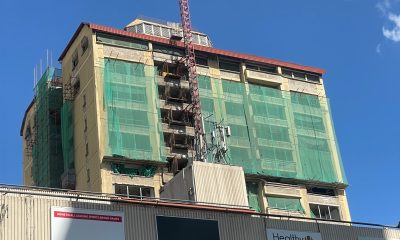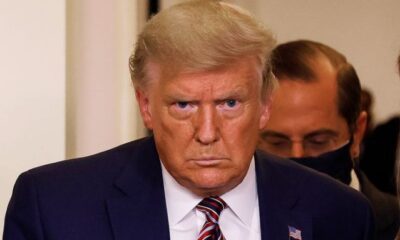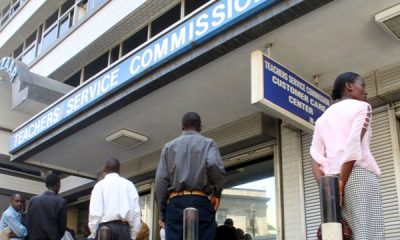Investigations
Inside Kenya’s Secret War With Mexican Drug Cartel
The Jalisco New Generation Cartel (CJNG), led by the infamous Nemesio Oseguera Ramos known as “El Mencho” represents one of Mexico’s most ruthless criminal organizations.

In the dusty borderlands of Namanga, where Kenya meets Tanzania, security forces have uncovered what may be one of the most significant transnational crime operations to ever penetrate East Africa.
Behind the makeshift walls of what appeared to be an ordinary compound in Olelopo village, Mexican cartel operatives had established a sophisticated methamphetamine laboratory marking the Jalisco New Generation Cartel’s audacious attempt to expand its global empire into the heart of Africa.
The Jalisco New Generation Cartel (CJNG), led by the infamous Nemesio Oseguera Ramos known as “El Mencho” represents one of Mexico’s most ruthless criminal organizations.
With a $10 million bounty on their leader’s head, this transnational syndicate has now set its sights on Kenya as a strategic hub for drug production and arms trafficking.
The cartel’s East African operations came to light through a web of arrests and discoveries that paint a disturbing picture of how deeply foreign criminal enterprises have penetrated Kenya’s borders.
At the center of this network sits Kenyan businessman Elisha Odhiambo Asumo, whose arrest in Morocco in April 2025 has exposed the intricate connections between local facilitators and international drug trafficking organizations.
Court documents reveal that between 2022 and 2024, Asumo allegedly orchestrated a complex arms smuggling operation that would have supplied weapons to the Mexican cartel.
His method was sophisticated: creating fraudulent end-user certificates including one purportedly issued by Tanzania to legitimize illegal arms shipments.
The operation reached its crescendo in early 2023 when Asumo allegedly traveled to South Africa to meet with cartel representatives, finalizing logistics for what investigators describe as a significant arms deal.
The businessman now faces two federal charges in the United States, each carrying potential life sentences: conspiracy to unlawfully import narcotics and conspiracy to possess firearms in furtherance of drug trafficking.
The Namanga Laboratory Discovery
The cartel’s ambitions extended beyond arms trafficking into drug manufacturing.
In September 2024, Kenyan authorities discovered a makeshift methamphetamine laboratory in Namanga, operated under the supervision of Israel Alvarado Vera, a former Mexican police officer turned alleged CJNG operative.
The laboratory was no amateur operation. Authorities confiscated industrial quantities of precursor chemicals including Methylamine, Phenylacetone, tartaric Acid, Sodium Hydroxide, Ethanol, Acetone, and Toluene the essential ingredients for large-scale methamphetamine production.
The sophistication of the operation suggests significant investment and planning by the cartel.
Vera, who initially fled after the laboratory’s discovery, was eventually captured alongside a Kenyan woman and two Nigerian nationals.
Their arrest exposed a truly global network stretching across continents from Nigeria and South Africa to Gabon, Mexico, and Brazil.
The fugitive network
Perhaps most concerning for regional security is the revelation that the network’s leadership remains at large.
Investigations have identified a key fugitive who investigators believe has fled to Uganda, potentially establishing new operational bases across East Africa’s porous borders.
This development underscores a troubling reality: criminal organizations are exploiting East Africa’s strategic location and weak border controls to establish manufacturing and transit hubs for global drug trafficking.
Kenya’s position as a regional hub for trade and transport makes it an attractive target for cartels seeking to expand their reach into European and Asian markets.
The Mexican Embassy in Nairobi has maintained official silence on the cartel’s presence in Kenya, citing ongoing legal proceedings.
In a carefully worded statement, embassy officials confirmed only that they are providing “consular assistance within the framework of the Vienna Convention on Consular Relations.”
This diplomatic restraint highlights the delicate nature of international cooperation in combating transnational crime, particularly when it involves citizens of allied nations engaged in criminal activities far from home.
The CJNG’s expansion into Kenya represents more than isolated criminal activity it signals a strategic shift in global drug trafficking patterns.
As traditional routes through Mexico and Central America face increased scrutiny, cartels are diversifying their operations into regions with less developed counter-narcotics capabilities.
For Kenya, this presents unprecedented challenges. The country must now contend not only with local crime but with the sophisticated methods and vast resources of international criminal organizations.
The cartel’s use of legitimate business covers, fraudulent documentation, and corruption of officials demonstrates the multifaceted nature of this threat.
Questions that remain
Several critical questions emerge from this investigation:
How many similar operations remain undetected across East Africa?
The discovery of one laboratory suggests others may exist, hidden behind legitimate business fronts or in remote locations beyond regular surveillance.
What role do corrupt officials play in facilitating these operations?
The sophisticated nature of the arms trafficking scheme suggests possible official complicity or negligence in oversight mechanisms.
How extensive is the cartel’s recruitment of local facilitators?
Asumo’s alleged role indicates that criminal organizations are successfully identifying and cultivating local partners with the connections and knowledge necessary to operate within Kenya’s business and regulatory environment.
Kenya’s battle against the CJNG infiltration requires a comprehensive response that goes beyond traditional law enforcement.
Success will demand enhanced international cooperation, strengthened border controls, improved financial monitoring systems, and robust anti-corruption measures.
The Namanga laboratory bust and related arrests represent significant victories, but they also reveal the scope of the challenge ahead.
As criminal organizations become increasingly global in their operations, Kenya and its regional partners must develop equally sophisticated and coordinated responses.
The stakes could not be higher. Failure to contain the cartel’s expansion risks transforming East Africa into a major hub for global drug trafficking, with all the violence, corruption, and social devastation that typically follows in its wake.
This investigation is ongoing. The full extent of the CJNG’s operations in Kenya and the broader East African region continues to unfold as authorities work to dismantle what appears to be an extensive transnational criminal network.
Kenya Insights allows guest blogging, if you want to be published on Kenya’s most authoritative and accurate blog, have an expose, news TIPS, story angles, human interest stories, drop us an email on [email protected] or via Telegram
-

 News2 weeks ago
News2 weeks agoKenyan Driver Hospitalized After Dubai Assault for Rejecting Gay Advances, Passport Seized as Authorities Remain Silent
-

 Investigations1 week ago
Investigations1 week agoMoney Bior, Lawyer Stephen Ndeda Among 18 Accused Of Running An International Fraud Ring Involved With Scamming American Investor Sh500 Million
-

 Investigations6 days ago
Investigations6 days agoNestlé Accused of Risking Babies’ Health in Africa with ‘Toxic’ Cerelac Product Sold Highest in Kenya
-

 Business2 weeks ago
Business2 weeks agoConstruction Of Stalled Yaya Center Block Resumes After More Than 3 Decades and The Concrete Story Behind It
-

 Investigations2 weeks ago
Investigations2 weeks agoHow Somali Money From Minnesota Fraud Ended In Funding Nairobi Real Estate Boom, Al Shabaab Attracting Trump’s Wrath
-

 News1 week ago
News1 week agoTSC Announces Major Policy Shift To End Transfer Of Promoted Teachers
-

 News5 days ago
News5 days ago48-Year-Old Woman Who Pushed 25-Year-Old Boyfriend To Death From 14th Floor Kilimani Apartment Arrested
-

 Investigations2 days ago
Investigations2 days agoHow Land Grabbing Cartels Have Captured Ardhi House














